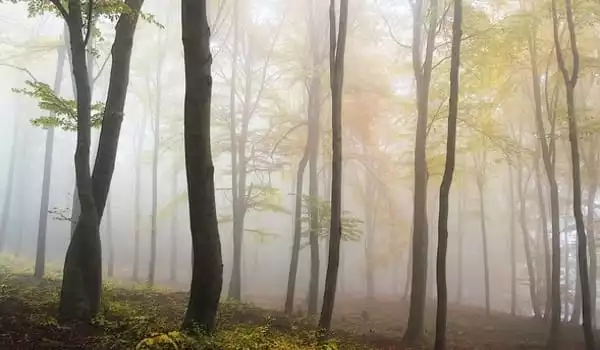A recent study reveals that tropical forests assist to reduce world average temperatures by more than 1 degree Celsius. The effect is primarily due to forests’ ability to trap and store atmospheric carbon. However, researchers explain in Frontiers in Forests and Global Change that numerous other processes, such as the release of water vapor and aerosols, account for around one-third of the tropical cooling effect.
During photosynthesis, tropical forest trees, like other green plants, absorb carbon dioxide from the atmosphere and emit oxygen. They also perform the opposing process, known as respiration, but while forests are developing, photosynthesis outnumbers respiration, and the excess carbon is deposited in tree trunks, roots, and soil. This is known as “sequestration.” When forests are cut down, a large portion of the stored carbon is released back into the atmosphere as CO2. Deforestation and forest degradation contribute to global warming in this way.
“We tend to focus on carbon dioxide and other greenhouse gases, but forests are not just carbon sponges,” says Deborah Lawrence, an environmental scientist at the University of Virginia in Charlottesville. “It’s time to think about what else forests are doing for us besides just absorbing carbon dioxide.”
During photosynthesis, tropical forest trees, like other green plants, absorb carbon dioxide from the atmosphere and emit oxygen. We tend to focus on carbon dioxide and other greenhouse gases, but forests are not just carbon sponges. It’s time to think about what else forests are doing for us besides just absorbing carbon dioxide.
Deborah Lawrence
Researchers were already aware that forests had an impact on local climates through a variety of physical and chemical processes. Trees produce water vapor through pores in their leaves, a process known as evapotranspiration, which cools the trees and their surroundings in the same way that humans sweat. Uneven forest canopies can also have a cooling effect by providing an undulating surface that can nudge hot, overpassing air fronts upward and away. Furthermore, trees produce aerosols, which can reduce temperatures by reflecting sunlight and seeding clouds.
But on a global scale, it wasn’t clear how these other cooling benefits compared with the cooling provided by forests’ capturing of carbon dioxide, Lawrence says.
So she and her colleagues analyzed how the complete deforestation of different regions would impact global temperatures, using data gathered from other studies. For instance, the researchers used forest biomass data to determine how much the release of carbon stored by those forests would warm the global temperature. They then compared those results with other studies’ estimates of how much the loss of other aspects of forests — such as evapotranspiration, uneven canopies, and aerosol production — affected regional and global temperatures.

As trees develop, they contribute to climate change mitigation by taking carbon dioxide from the atmosphere, storing carbon in the soil and trees, and releasing oxygen into the atmosphere. Every day, trees bring numerous benefits to us. They provide soothing shade, block chilly winter winds, attract birds and wildlife, clean our water, purify our air, prevent soil erosion, and bring grace and beauty to our homes and communities.
The researchers discovered that carbon sequestration was the principal method that trees influenced global average temperature in latitudes ranging from roughly 50° S of the equator to 50° N. However, the other cooling forces remained significant.
Forests located between 30° N and 30° S provided alternative advantages that cooled the world by more than 0.3 degrees Celsius, roughly half the amount of cooling supplied by carbon sequestration. And the majority of that cooling, about 0.2 degrees Celsius, occurred from trees in the tropics’ core (within 10 degrees of the equator). In general, canopy topography provided the most cooling, followed by evapotranspiration and then aerosols.
The team reports that forests in the far north appear to have a net warming effect. Clearing the boreal woods, which span Canada, Alaska, Russia, and Scandinavia, would result in increased snow cover throughout the winter. Because snow reflects much of the incoming sunlight back into the sky, this would lower ground level temperatures. Nonetheless, the researchers discovered that the world’s forests collectively decrease the global average temperature by roughly 0.5 degrees Celsius.
According to Lawrence, the findings show that global and regional climate change efforts should avoid focusing solely on carbon emissions. “There’s a whole set of services that tropical forests provide that are simply invisible to us or policymakers.”
















